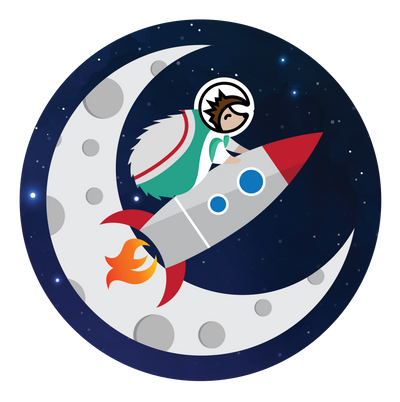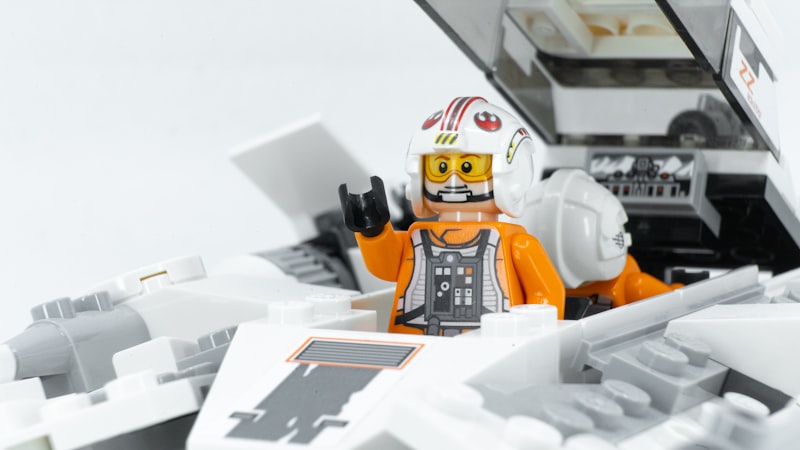Update: Since the time of writing, LUNA and UST have crashed following UST depegging from the dollar. As we mention below, we've seen many algorithmic stablecoins fail in the past but many thought UST was going to be the first that would succeed. Terraform Labs have desperately tried to maintain its stablecoin's peg to the US dollar by burning through its $1.3 billion Bitcoin reserve.
Unfortunately, they remain way below a dollar and have since halted the Terra blockchain. The information below remains factual despite the current collapse of the project.
We live in a space where many new crypto projects are quick cash grabs, quirky ideas, or hyped forks of other coins. Not Terra. Terra is one of those rare innovative projects that targets an actual issue in the crypto space.
Let me elaborate...
What is one of the major gripes the mainstream has against crypto and the practicality of using it? Of course, it’s the goddamn volatility. The thing that so many traders entering the space love — is the downfall when trying to achieve mass adoption.
Yeah, sure, it's great when I put my money in Doge and doggy goes zoom. 🚀 But, in reality, this volatility actually hurts the entire space, especially if it can be so easily triggered by an influencer. For people to use cryptocurrencies as their primary way of transaction, there needs to be some level of trust that the currency isn’t going to zero.
Terraform Labs was formed in 2018 with the sole goal of enabling mass adoption. Terraform Labs have multiple stablecoins but the most notable one is UST which aims to fix this issue.
The Idea Behind Terra
Terra’s story started when its co-founders Daniel Shin and Do Kwon had multiple conversations about the road to mass adoption. The pair agreed that price stability and adoption are the two keys to reaching the final goal of cryptocurrency and blockchain technology — a decentralized peer-to-peer network without intermediaries.
Having previously founded Fast Track Asia, Daniel Shin had gained experience with the existing problems in payment networks. He knew they couldn't be solved by incremental improvements — the blockchain needed radical change.
Do Kwon saw these issues that Shin had encountered as an opportunity to rebuild the money system from the ground up. Thus, Terraform Labs was born.
The Road to Mass Adoption
Formed in January of 2019, Terraform Labs didn't launch its first product until April of the same year. This is when the LUNA mainnet was launched, as well as Testnet Soju, Terra Faucet, Terra Docs, Terra Station (wallet), and Terra Finder (block explorer).
A year later, Daniel Shin left Terraform labs to form the Chai Corporation. Don't worry, that doesn't mean he left the Terra ecosystem. In fact, Chai is a payments app built on the Terra blockchain.
After presenting the Chai card that offered up to 50% discounts with popular brands and integrated with MasterCard, they raised over $60 million in Series B funding. They used this to continue making products that solved real problems. Cue Anchor Protocol.
Not too long after the launch of Chai, the Anchor protocol was announced. This is where we saw interest in the Terra project skyrocket.
10/
— Terra (UST) 🌍 Powered by LUNA 🌕 (@terra_money) July 6, 2020
Announcing Anchor!#DeFi #Unitize2020 pic.twitter.com/sVDKvU3kSa
Providing up to 20% APY, the Anchor protocol offers unrivaled returns on your stable coins. Risk-averse investors began to flock to the platform when it launched in March of 2021.
Anchor acted like a marketing campaign for Terra. An innovative way to throw money at something to bring users to their platform. It worked — very, well infact.
However, bears worried that a 20% APY yield on stablecoins was unsustainable. They were right. This theory became reality when Anchor announced that their rates will slowly start to fall.
Nevertheless, the Anchor protocol remains the biggest project in the Terra ecosystem and has been a direct contributor to the $14 billion invested in the Terra blockchain. If this was just a marketing campaign, it is still a great success.
On the implementation of Anchor, Do Kwon said, "There is a real opportunity to acquire the millions of households looking for better sources of passive income that are not correlated with central banking monetary policy."
Every step of the way, the Terra team has had their eyes locked on mass adoption. They have attempted to replace traditional passive income sources, offer a better form of card payment, and, of course, the most reliable stablecoin around town.
UST is their prized possession and the current focus of the ecosystem. It seems every project that is built upon the Terra blockchain is used to bolster the use cases for it. You can even see this from the relationship between Terra's native token LUNA and UST.
So, How Does It Work?
TerraUSD takes a unique approach in the stablecoin space.
There are four main types of stablecoin: full-reserve, partial-reserve, over-collateral, and algorithmic. You can read more about stablecoins here, but for this article, let's focus on algorithmic stablecoins.
Algorithmic stablecoins, again, can be split into two different groups:
- Rebase
Increases or decreases its total supply to stabilize the tokens price.
- Seigniorage
Incentivizes network participants to mint or burn the token to maintain a stable price.
Terra innovates on the seigniorage concept (that’s a mouthful) by having two tokens to mint or burn in the case of instability. One is the stablecoin pegged to the US dollar and the other is LUNA, Terra's native coin.
When UST falls below $1, network participants are encouraged to burn UST in exchange for LUNA, at an arbitrage price — making those burning a profit. If UST goes above $1, network participants are then pushed to mint UST in exchange for LUNA, again at an arbitrage rate.
Why does LUNA work?
We've seen many algorithmic seigniorage stablecoins fail in the past, such as BASE, so why is this so different? It’s because LUNA's price is independent of UST's and is backed by assets outside of the Terra ecosystem. For example, Do Kwon has openly said that UST is now being backed by over $10 billion of Bitcoin.
$UST with $10B+ in $BTC reserves will open a new monetary era of the Bitcoin standard.
— Do Kwon 🌕 (@stablekwon) March 14, 2022
P2P electronic cash that is easier to spend and more attractive to hold #btc
Whereas, historically, algorithmic seigniorage stablecoins have worked — or should I say failed — by simply burning and minting stablecoins and bonds within their ecosystem.
Using their unique approach to stablecoins, Terraform Labs is aiming to achieve their goals of mass adoption by becoming the easiest to use, most reliable, and most accessible stablecoin on the planet.
Check out writer Ryan S. Gladwin's website, follow him on Twitter, and of course, subscribe to the weekly Hedgehog newsletter!




